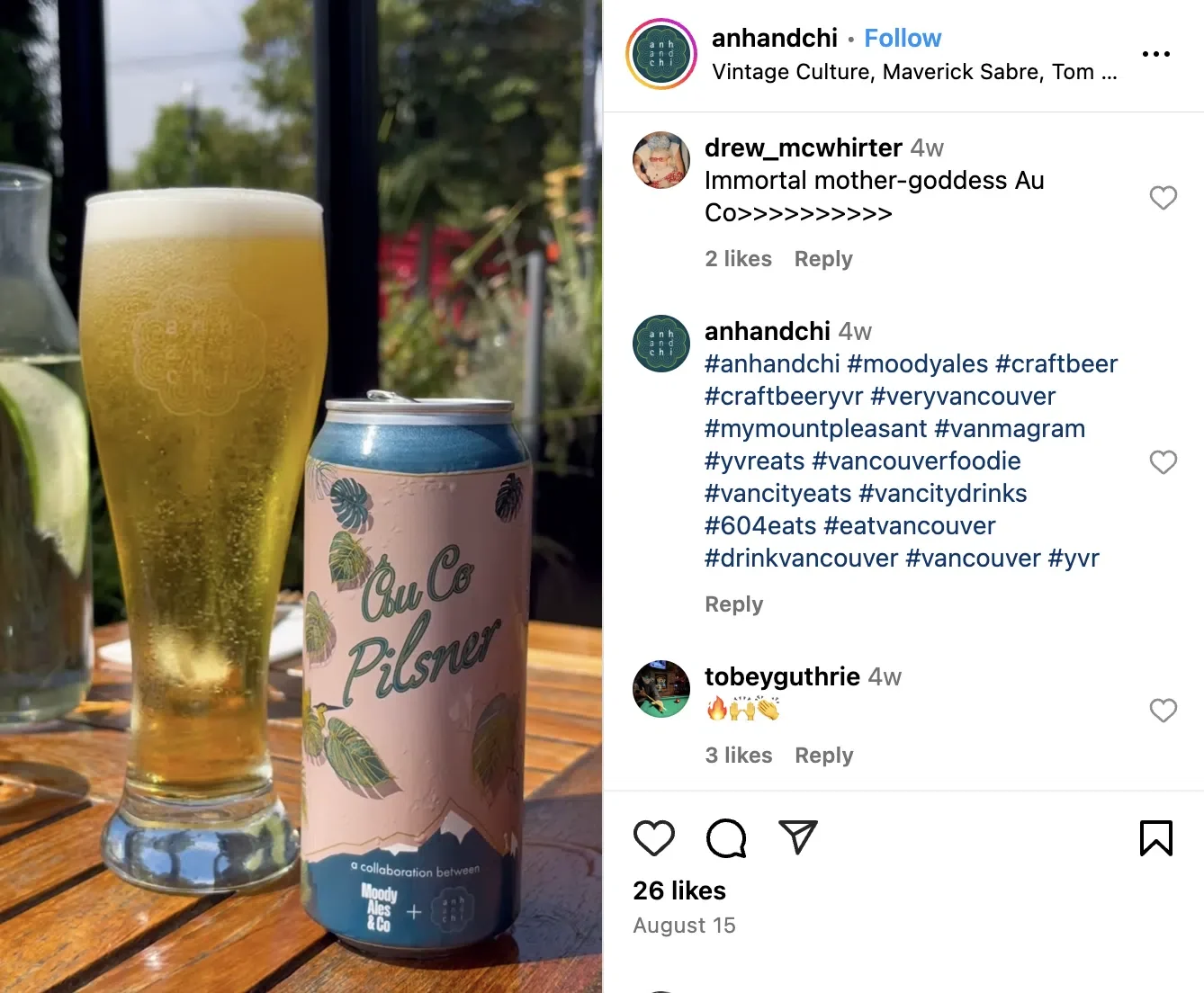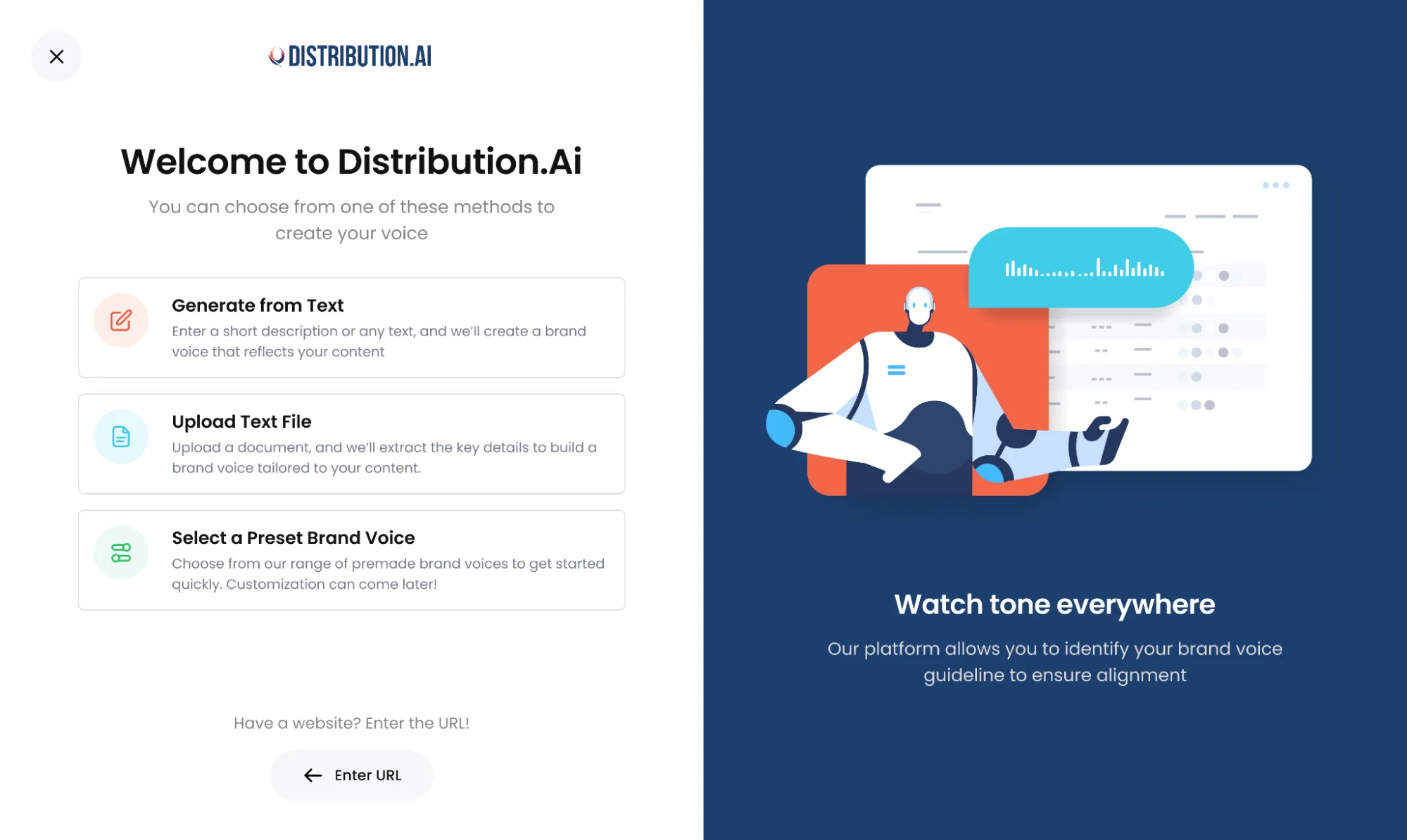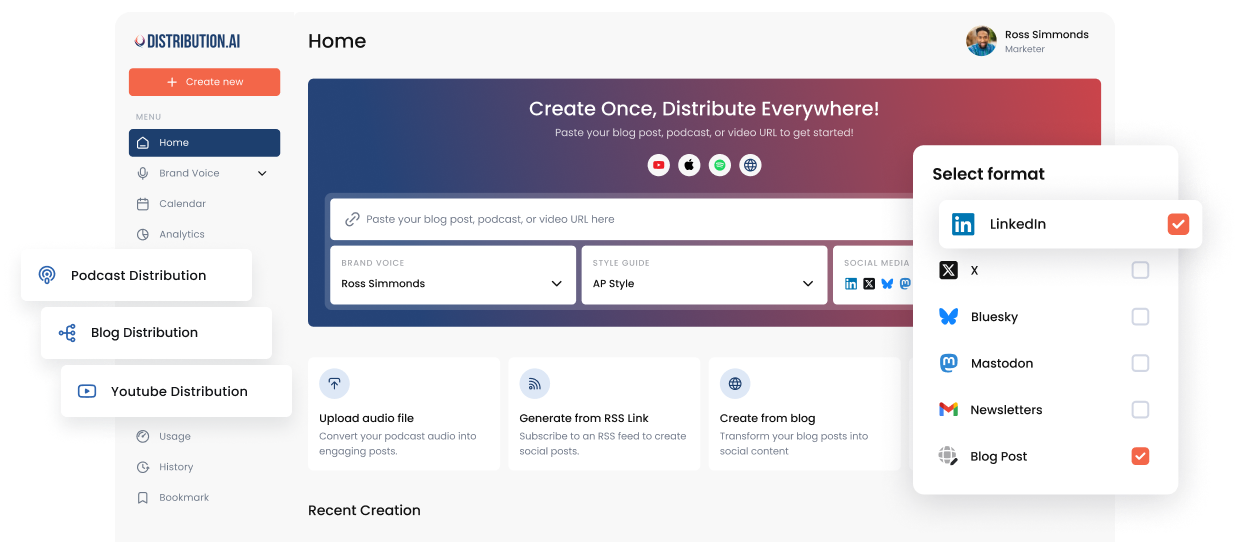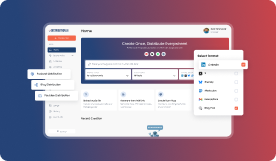How to Find the Best Instagram Hashtags for Your Niche in 2025
Discover how to find the best Instagram hashtags for your niche in 2025. Learn proven strategies, avoid common mistakes, and boost your reach.

You’ve spent hours crafting the perfect Instagram post. The lighting is chef’s kiss. Your caption is witty and engaging.
You hit publish, sit back, and… crickets.
Sound familiar?
Even the most stunning content can get lost in Instagram’s endless feed if you’re not using the right hashtags.
With over a billion people scrolling through Instagram every month, hashtags are your ticket to getting discovered by the right audience.
But this isn’t about throwing random popular tags onto your posts and hoping for the best. There’s actually a strategy behind it.
Read on to learn more.
What Are Instagram Hashtags?
Instagram hashtags are clickable keywords or phrases that start with the # symbol.

They categorize your content and make it discoverable to people searching for those specific topics.
Think of hashtags as filing labels for your posts. When you tag your content with #VeganRecipes, you’re essentially putting it in a folder where people interested in plant-based cooking can find it.
Every Instagram hashtag is clickable.
People can tap or search for them to discover content related to topics they care about.
When you use relevant hashtags, your posts show up on hashtag pages, in search results, and potentially on the Explore page.
The beauty of hashtags is that they help you reach people beyond your existing followers.
Your content can appear in front of users who’ve never heard of you but are actively interested in what you’re posting about.
Do Instagram Hashtags Still Work in 2025?
Let’s address the elephant in the room.
Instagram removed the ability to follow hashtags back in December 2024.
This had some people wondering if hashtags were dead.

Spoiler alert: they’re not.
Hashtags are still a crucial signal for Instagram’s algorithm.
They help the platform understand what your content is about and who should see it.
Instagram uses hashtags to categorize posts and serve them to users interested in those topics.
The change actually makes hashtags more effective in some ways.
Before, people could game the system by stuffing posts with trending hashtags that had nothing to do with their content.
Now, Instagram focuses on showing users content they’re genuinely interested in based on relevance rather than just hashtag follows.
Bottom line?
Hashtags absolutely still matter. You just need to use them strategically.
Where You Can Use Hashtags on Instagram
Instagram gives you several places to add hashtags throughout the platform.
1. Instagram Posts

This is the most common spot. You can add hashtags directly in your caption or as the first comment on your post. Both placements perform equally well in terms of reach.
Some people prefer adding hashtags in the first comment to keep their captions clean and focused on the message.
Others naturally weave hashtags into their captions. Test both approaches and see what feels right for your brand.
Instagram allows up to 30 hashtags per post, but you definitely shouldn’t use all of them. More on that in a minute.
2. Instagram Stories
Don’t skip hashtags on your Stories just because they disappear after 24 hours.
Stories show up in hashtag search results, too, which means they’re another opportunity to reach new audiences.
You can add hashtag stickers to your Stories or type them directly into the text.
If you want to use multiple hashtags without cluttering your Story, type them out and then hide them behind a GIF or sticker.
3. Instagram Reels
Hashtags work on Reels just like they do on regular posts.
Add them to your caption when you publish your Reel to help Instagram understand what your video content is about and who should see it.
4. Instagram Bio
You can include hashtags in your bio, though they’re less common here.
Some brands use branded hashtags in their bio to encourage user-generated content.
For example, a coffee shop might include #YourShopNameCoffee to inspire customers to share their morning brew photos.
How Many Instagram Hashtags Should You Use?
This is probably the most debated question in Instagram marketing.
Instagram technically allows 30 hashtags per post.
But just because you can doesn’t mean you should.
Using all 30 hashtags makes your posts look spammy.
Instagram’s algorithm might even flag your content as low-quality if you overuse hashtags.
The sweet spot is 3 to 5 relevant hashtags per post.
This recommendation comes straight from Instagram’s Creator account.
Focusing on a smaller number of high-quality, relevant hashtags works better than cramming in as many as possible.
That said, every account is different.
Some brands find success with more hashtags, especially when they add them in the first comment rather than the caption.
The key is testing what works for your specific audience and content.
Types of Instagram Hashtags You Should Know
Not all hashtags serve the same purpose.
Understanding different hashtag types helps you build a more strategic approach.
1. Branded Hashtags
These are unique hashtags you create for your company or campaign.
Think #JustDoIt for Nike or #ShareACoke for Coca-Cola.

Branded hashtags build community around your brand and encourage user-generated content.
They also make it easy to track mentions and see what people are saying about your products or services.
Place your main branded hashtag in your Instagram bio, along with a call to action encouraging followers to use it.
2. Community Hashtags
These connect you with like-minded users around specific topics or interests.
Community hashtags are broader than branded ones and are used by many different accounts.
For example, craft beer enthusiasts might use hashtags like #CraftBeerLover, #CraftBeerLife, or #CraftBeerNotCrapBeer to connect with other beer fans.
These hashtags help you tap into existing conversations and communities on Instagram.
3. Niche Hashtags
Niche hashtags target very specific audiences within your industry. Instead of using the broad hashtag #Food, a vegan restaurant might use #VeganEats or #PlantBasedRecipes.
Niche hashtags typically have fewer posts than popular ones, but they connect you with a highly engaged audience that’s genuinely interested in your specific type of content.
4. Location Hashtags
If you’re a local business or targeting a specific geographic area, location hashtags are essential.
They help you reach people in your city or region.
A Vancouver restaurant might use #VancouverEats, #VancityFood, or #VancouverFoodie to connect with local food lovers.

You can get even more specific with neighborhood hashtags like #GastownVancouver.
5. Product or Service Hashtags
These describe what you’re offering in straightforward terms.
Examples include #YogaClasses, #HandmadeSoap, or #DigitalMarketingServices.
Product hashtags make your posts searchable for users specifically looking for what you sell.
6. Trending Hashtags
Trending hashtags capitalize on viral moments, memes, or current events. They can give your content a massive visibility boost, but they’re highly competitive and short-lived.
You need to jump on trends quickly and make sure they’re actually relevant to your brand. Forcing a trend that doesn’t fit your content usually backfires.
7. Campaign Hashtags
These are temporary hashtags used for specific marketing campaigns, contests, or product launches.
They help track participation and engagement around that particular initiative.
Campaign hashtags work best when they’re unique and memorable.
Make them short enough that people can easily type them out.
8. Daily Hashtags
These hashtags tie content to specific days of the week. Think #MotivationMonday, #TransformationTuesday, or #ThrowbackThursday.
Daily hashtags are easy ways to join larger conversations happening on the platform.
Just make sure your content actually fits the theme.
How to Find the Best Instagram Hashtags for Your Niche
Now for the good stuff.
Here are proven strategies for discovering hashtags that will actually help you reach your target audience.
1. Use Instagram’s Search Function
Start with one keyword related to your content.
Type it into Instagram’s search bar, then tap the “Tags” option.
Instagram will show you related hashtags along with how many posts use each one.
This gives you instant insight into which hashtags are popular and which ones might be too competitive or too obscure.
For example, searching “coffee” might surface hashtags like #CoffeeLover, #CoffeeAddict, #CoffeeTime, and #SpecialtyCoffee.
You can click on any of these to see what kind of content appears under that hashtag.
2. Study Your Competitors
Look at accounts in your industry that are crushing it on Instagram.
Pay attention to which hashtags they use on their highest-performing posts.
Don’t just copy their hashtags word-for-word. Instead, use their strategy as inspiration to identify patterns and discover hashtags you might have missed.
Notice if they mix broad and specific tags. See if they’re using any niche hashtags you haven’t considered.
Check if they’ve created unique branded hashtags that are gaining traction.
3. Follow Industry Influencers
Find the top content creators and thought leaders in your space.
Look at the hashtags they consistently use in their posts.
Influencers often have their finger on the pulse of what’s working.
The hashtags they use regularly are probably driving real engagement and reach.
4. Check the Explore Page
The Explore page shows you trending content based on what you typically engage with.
Scroll through and take note of hashtags appearing on posts similar to yours.
This helps you spot rising trends before they become oversaturated.
Getting in early on an emerging hashtag can give you a significant advantage.
5. Use Hashtag Generator Tools
Tools that generate hashtags for you can save massive amounts of time.
They analyze your content and suggest relevant hashtags based on keywords and trends.
Some tools even show you engagement rates and competition levels for different hashtags, helping you make smarter choices about which ones to use.
If you're managing content across multiple platforms and repurposing assets for Instagram, tools like Distribution AI can help streamline your workflow.
You can transform long-form content into Instagram-ready posts while maintaining a consistent hashtag strategy across all your social channels.

6. Look at Hashtag Performance Data
If you have an Instagram Business account, you can access insights showing which hashtags drive the most impressions and engagement.
Pay attention to patterns over time. Maybe #FitnessMotivation performs better for you than #FitnessGoals.
Or perhaps location hashtags consistently drive more engagement than industry-wide ones.
Use this data to refine your hashtag collections and double down on what’s actually working.
Creating Your Hashtag Strategy
Finding great hashtags is only half the battle.
You need a system to organize and use them effectively.
1. Build Hashtag Collections
Create different sets of hashtags for different types of content.
You might have one collection for product posts, another for behind-the-scenes content, and a third for educational posts.
This saves you from starting from scratch every time you post. Instead of copying the same hashtags for everything, you can quickly grab the relevant collection.
2. Mix Hashtag Sizes
Use a combination of hashtags with different levels of popularity. This strategy helps you reach both broad and targeted audiences.
Popular hashtags (over 500K posts) give you wide exposure but intense competition. Your post might get buried quickly.
Medium hashtags (50K to 500K posts) offer a good balance of reach and competition. These are often your best bet.
Niche hashtags (under 50K posts) connect you with highly engaged, specific audiences. Your content has a better chance of being seen here.
A clever mix might look like this for a fitness coach:
- #Fitness (549M posts) – broad reach
- #FitnessMotivation (156M posts) – medium reach
- #HomeworkoutTips (45K posts) – niche audience
3. Keep Hashtags Relevant
Never use a hashtag just because it’s popular.
Every single hashtag should relate directly to your content.
If you run a digital marketing agency, using #FitnessGoals on your social media tips post makes zero sense.
You might get a few extra views, but they’ll be from people who have no interest in what you actually offer.
Instagram’s algorithm is smart enough to recognize when hashtags don’t match content. Using irrelevant hashtags can actually hurt your reach.
4. Update Your Hashtags Regularly
What works today might not work next month. Instagram trends shift quickly, and hashtag popularity changes over time.
Review your hashtag performance every few weeks.
Drop hashtags that aren’t delivering results and test new ones. Keep your strategy fresh by staying aware of emerging hashtags in your industry.
5. Test Different Placements
Try putting hashtags in your caption for some posts and in the first comment for others. Track which approach gets better engagement for your account.
Some brands find that hashtags in captions perform slightly better.
Others see no difference. The only way to know what works for your specific audience is to test it yourself.
Best Practices for Using Instagram Hashtags
1. Balance Broad and Niche Hashtags
The trick is finding hashtags that aren’t too general or too specific.
Massive hashtags like #Food or #Fashion have billions of posts. Your content gets lost immediately in that sea of competition.
Extremely niche hashtags with only a couple of hundred posts won’t give you much visibility either.
Check the post count when you search for hashtags on Instagram. Aim for a mix that includes some hashtags in the 50K to 500K range.
These tend to have active communities without being impossibly competitive.
A bakery wouldn’t just use #Baking. They might use #ArtisanBread or #SourdoughLovers to reach people specifically interested in their type of products.
2. Put Yourself in Your Customer’s Shoes
Stop thinking like a marketer for a second and start thinking like your target audience.
What would someone actually type into Instagram if they were looking for content like yours? What problems are they trying to solve? What gets them excited?
Use hashtags that match the actual language your customers use, not just industry jargon or marketing speak.
If your audience calls it “meal prep,” don’t use #NutritionPlanning just because it sounds more professional.
3. Add Location Tags for Local Reach
Running a local business? Location hashtags should be part of every post.
These tags help you connect with people in your geographic area who might actually visit your physical location or use your services.
Someone searching #ChicagoEats or #DenverFitness is looking for options near them.
Go beyond just your city name. Include neighborhood hashtags, regional nicknames, and local landmarks.
A gym in Brooklyn might use #BrooklynFitness, #WilliamsburgGym, and #BKWorkout to cast a wider local net.
4. Target Industry Publications and Influencers
Want to get noticed by bigger accounts in your space? Use their branded hashtags.
Many industry publications, local magazines, and influencers create unique hashtags to curate user submissions.
Check their bios to see if they list any. Using these hashtags puts your content in front of accounts that might feature or share it.
A fashion brand might use hashtags from style magazines.
A restaurant could tag local food bloggers’ hashtags. Make sure your content is worth featuring before you do this.
5. Switch Up Your Hashtags
Using identical hashtags on every post is a rookie move.
Instagram’s algorithm notices patterns that appear to be spam behavior.
Posting the same 30 hashtags repeatedly can limit your reach over time.
Create separate hashtag sets for each content type. Keep a few core branded hashtags consistent, but rotate the rest based on each post’s topic.
Your product launch post should use different hashtags from your team culture post.
6. Format for Readability
Multi-word hashtags should capitalize each word: #SocialMediaTips instead of #socialmediatips.
This formatting makes hashtags significantly easier to read at a glance.
It’s especially important for accessibility, screen readers process capitalized hashtags much better than lowercase strings.
Small detail, but it shows you’re creating content with all users in mind.
7. Monitor What’s Actually Working
Guessing which hashtags perform best is a waste of time when you can just check the data.
Use Instagram Insights to see which hashtags are driving the most impressions and engagement on your posts.
Look for patterns over several weeks. Maybe educational content performs better with specific hashtags while promotional posts work better with others.
Drop hashtags that consistently underperform. Test new ones regularly. Your hashtag strategy should evolve based on real results, not assumptions.
Popular Instagram Hashtags by Industry
Need some inspiration? Here are hashtag ideas for different industries to get you started.
B2B and Business
- #SmallBusiness
- #Entrepreneur
- #DigitalMarketing
- #B2B
- #Leadership
- #Innovation
- #SaaS
- #BusinessTips
- #MarketingStrategy
- #ThoughtLeadership
Fashion and Beauty
- #Fashion
- #Style
- #OOTD (Outfit of the Day)
- #Makeup
- #Skincare
- #FashionBlogger
- #BeautyTips
- #Fashionista
- #StreetStyle
- #BeautyBusiness
Fitness and Wellness
- #Fitness
- #Workout
- #FitnessMotivation
- #Gym
- #HealthyLifestyle
- #FitnessJourney
- #Yoga
- #StrengthTraining
- #HomeWorkout
- #WellnessJourney
Food and Restaurants
- #Food
- #Foodie
- #FoodPhotography
- #Instafood
- #FoodBlogger
- #Restaurant
- #Yummy
- #FoodLover
- #ChefLife
- #EatLocal
Travel and Hospitality
- #Travel
- #TravelPhotography
- #Wanderlust
- #TravelGram
- #Vacation
- #Adventure
- #InstaTravel
- #TravelBlogger
- #ExploreMore
- #TravelDiaries
Technology and Software
- #Technology
- #Tech
- #Innovation
- #AI
- #Programming
- #SoftwareDevelopment
- #TechNews
- #Coding
- #Developer
- #Engineering
Remember that these are just starting points. The best hashtags for your specific niche will depend on your unique audience, location, and content style.
Common Instagram Hashtag Mistakes to Avoid
Even experienced marketers make these mistakes. Don’t let them tank your hashtag strategy.
- Using too many hashtags. Stick to 3-5 quality hashtags rather than maxing out at 30. Less really is more on Instagram.
- Ignoring relevance. Every hashtag should connect directly to your post content. Random popular hashtags won’t help you reach the right people.
- Never changing your hashtags. Using identical hashtag sets on every post looks lazy and can hurt your reach. Mix it up.
- Choosing only popular hashtags. Mega-popular hashtags are extremely competitive. Balance them with medium and niche options.
- Forgetting to track performance. If you’re not checking which hashtags work, you’re flying blind. Use Instagram analytics to guide your decisions.
- Making hashtags too complicated. Keep branded hashtags short and memorable. Nobody wants to type out #YourBrandNameSpecialPromotion2025.
- Hashtag stuffing in captions. If you’re using more than 5 hashtags, consider putting the extras in your first comment instead of cluttering your caption.
- Using banned hashtags. Instagram has banned certain hashtags due to spam or inappropriate content. Using them can limit your reach or even get your account flagged.
The Bottom Line on Instagram Hashtags
Instagram hashtags are still one of the most powerful tools for getting your content discovered by the right audience.
The key is moving beyond random hashtag selection. Build a thoughtful strategy that combines different hashtag types, stays relevant to your content, and evolves based on performance data.
Start by researching hashtags your competitors and industry leaders use. Mix popular, medium, and niche hashtags to balance reach and relevance. Create collections for different content types so you don’t have to start from scratch every time.
Most importantly, remember that hashtags support great content—they don’t replace it. Focus on creating valuable posts that resonate with your target audience.
Use tools like Distribution AI to repurpose your strongest content assets to create multiple Instagram posts—from text posts to infographics and carousels—all aligned to your brand’s voice.
Then, use hashtags strategically to help the right people find that content. Test different approaches, track what works, and keep refining your strategy.
The best Instagram hashtags for your niche are the ones that consistently connect you with engaged followers who actually care about what you’re posting.
Now stop overthinking it and start hashtagging smarter. And if you need help creating content,
Frequently Asked Questions
Promote, repurpose & distribute your content with AI
Start 15-Day Free Trial
